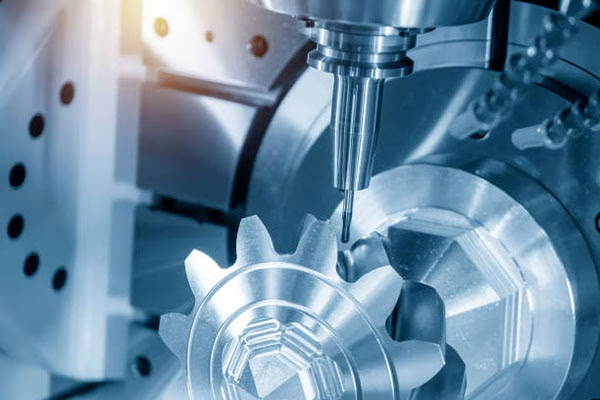Evidence suggests that machining had been used to create several objects as far back as several years B.C. However, the Computer Numeric Control (CNC) machining that we know only started in the 18th century when the steam engine was introduced to automate production.
The first programmable machining system was developed by researchers in MIT in the 1940s using punched paper cards called numeric control technology. The introduction of digital computing further revolutionized the manufacturing industry and today, advanced robotic CNC machines are commonly used in production processes.
It is not hard to understand why CNC machining is a popular manufacturing technique. It allows manufacturers to produce highly accurate parts that have consistent quality. They can use a wide range of materials, including metals, composites, plastics, and wood.
The process is also highly automated and offers manufacturers a cost-effective technique that would allow them to create parts in low to medium production runs or one-of-a-kind projects.
There are different types of CNC machines to choose from. To get the best results, you should know which type of suited parts are required and the applications. In this article, we are going to take a deep dive into each of them.

5 axis cnc machines
Types of CNC Machines
In manufacturing high-precision parts using CNC machining, there are two types of CNC machines to choose from 3-axis machines and multi-axis machines.
3-Axis Machining
Under the 3-axis machining includes CNC milling and CNC turning. Both processes use a moving cutting device that moves along three linear axes while the block of material is being cut. The three axes are left-to-right, up-and-down, and left-to-right.
In a CNC milling machine, the work piece is stationary as the cutting drills or tools rotate around it at a high speed to remove the material. These results to highly accurate parts. In addition, these machines are easy to operate and are used, mostly with simple geometric designs.
The only limitation about the CNC milling machine is because the cutting tools are moving only in three axes, some certain designs or areas are difficult to do. There is a workaround for this, but it means rotating the work piece. This method will increase the production costs.
In the CNC turning process, it is the work piece that is rotating while the lathe shapes the part. Lathes are faster and less expensive to run than CNC milling, especially when they are used in high-volume production runs. The only restriction about this process is it can only be used in creating rotationally symmetrical pieces.
Multi-axis Machining
The other type of CNC machine is the multi-axis CNC machine. It includes three processes to choose from: the indexed 5-axis CNC milling, milling-turning machine with live tooling, and continuous 5-axis milling.
The main advantage of the 5-axis CNC machines over the 3-axis version is they allow for freedom of movement because, in these machines, the tooling works along the three axes while the work piece has two rotational movements. It can create more freedom to create more complex parts.
- Indexed 5-axis CNC Milling: This is sometimes called 3+2 CNC milling because of how machining is done. The cutting tool moves along the three linear axes while the work piece has two rotational degrees of freedom. The main advantage of this type is there is no need for repositioning the block of material between operations. Thus, it allows for faster creation of pieces with greater accuracy,
- Continuous 5-axis CNC Milling: In this type, both the cutting tools and the workpieces are rotating and moving simultaneously during the operation. It can create extremely intricate geometries with smooth surfaces.
- Milling-turning CNC Machine: It combines the elements of CNC lathe machines with milling tools. In this process, the work piece is attached to a spindle that rotates or holds it at specific angles while in operation. It has the best productivity and can make complicated designs with ease.
Final Thoughts
While all CNC machining processes can create precise parts using a variety of materials, using the right type of CNC machine can create certain kinds of parts. For simpler designs, you can use the 3-axis systems. More geometrically challenging designs call for a 5-axis machine that can do them with increased accuracy and speed.
